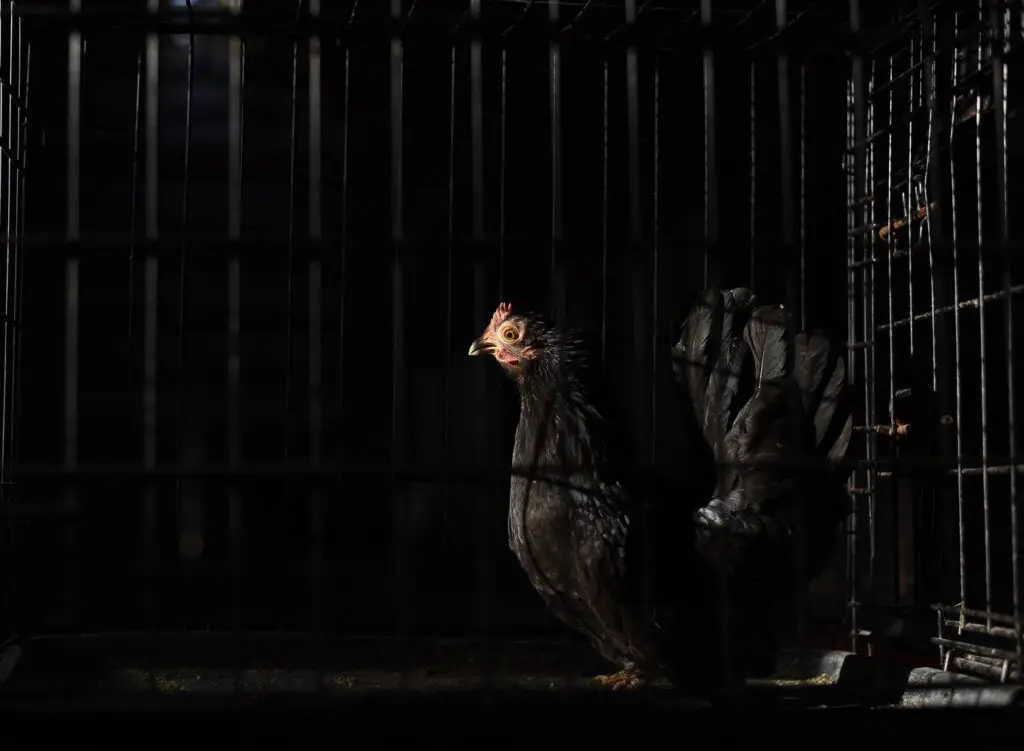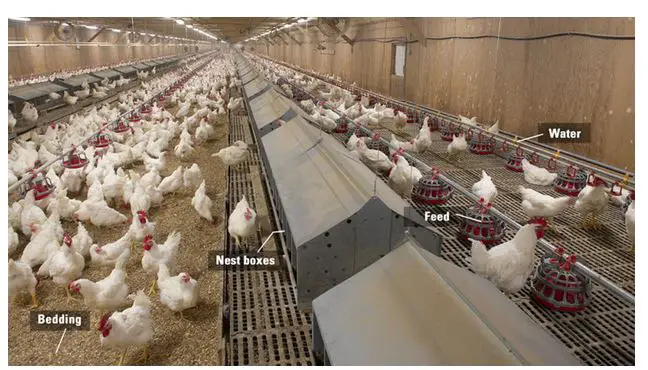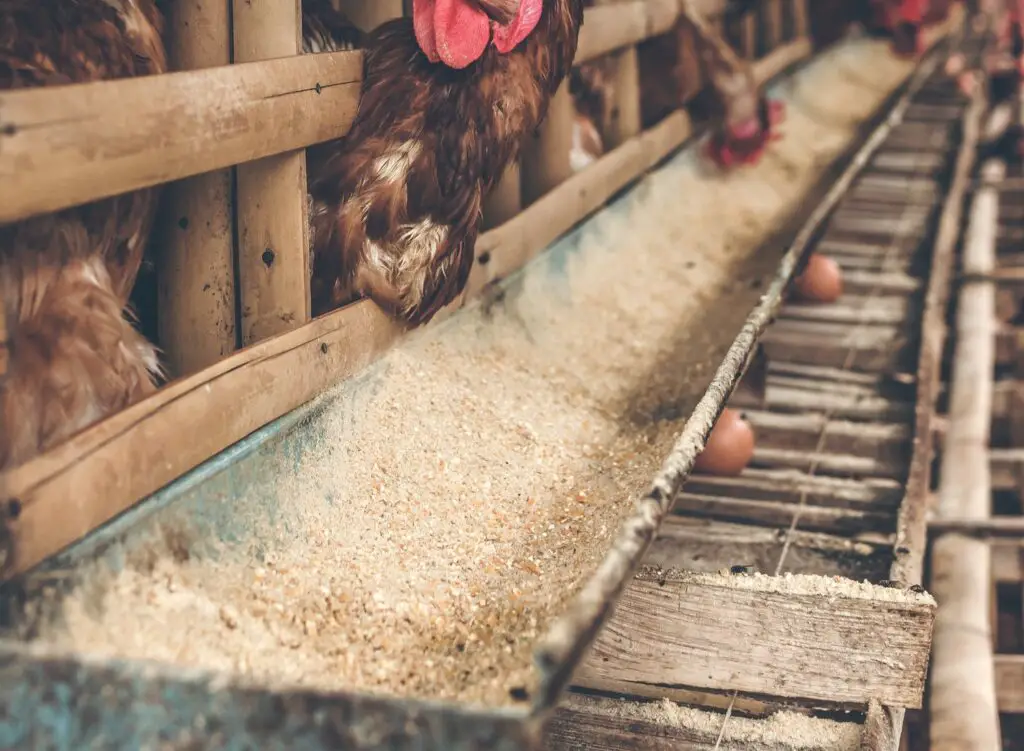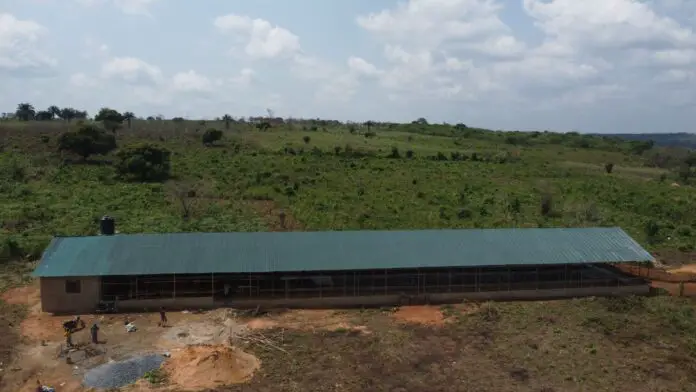Some links on this page may contain affiliate links which means that, if you choose to make a purchase using the link, Agricfy.com may earn a small commission at no extra cost to you. For more information, go to our Affiliate Disclosure Page!
Introduction
The type of poultry house you will choose is one of the most vital factors to consider when starting a poultry farm.
They all have their own unique features, but we’ll break down what each one has to offer in an easy-to-read format that will make your decision easier.
In addition, poultry farming is not a business that you can go into without careful consideration.
This post will give you some of the options that you can choose from and advice on how to make this decision easier for yourself.
In this blog post, we explore;
- What is a poultry house?
- Essential features about the types of poultry houses that will work for you
- What you should consider when starting your poultry farm
- The pros and cons of each of these poultry houses.
- Conclusion and Recommendations.
What is a Poultry House?

Poultry farming refers to the method of keeping domesticated birds such as chickens, ducks, and turkeys for the goal of producing meat or eggs for human use.
More so, fowl housing is simply a structure used to house poultry.
In addition, poultry farming has grown rapidly since it is very simple to set up and manage.
Furthermore, there are various varieties of chicken houses, which you can group according to the species and age of the poultry.
Additionally, the type of housing you design for your chickens may also be determined by its cost and upkeep method.
It also depends on the birds’ needs at the various stage of their growth.
On your farm, you can have brooder houses, and batteries, for raising chicks.
In addition, adult chickens, ducks, turkeys, and geese from breeding are housed in cages or on the floor.
Similarly, chickens raised for eggs are usually called layers while chickens raised for meat are called broilers.
Generally, a single story is typical for most poultry houses.
Poultry houses have water lines, a droppings disposal system, and central heating and ventilation systems.
Finally, their equipment is made at a factory to ensure that production processes are organized to the maximum extent possible.
Types of Poultry Houses
The main reason for putting birds into different poultry houses is that each type of bird requires a different level of management.
Similarly, you can keep broilers in one poultry house and layers in another.
Likewise, separating your chickens into different poultry homes also makes it easier to recognize the different breeds.
Here are the common types of poultry housing that you can find on a poultry farm.
1. Brooder/Chick House
It is a heated poultry house for raising young chickens, turkeys, and ducks from birth to about 8 weeks of age.
A brooding house is created to house chicks from birth until they are no longer in need of additional warmth.
Likewise, heat light, food, and water for the chicks, as well as bedding such as pine shavings, are normally available.
Types of Brooding
- Natural Brooding
On farms where only a few hens are kept each year, the natural brooding method is used.
Similarly, a hen will brood 15-20 chickens, depending on how big she is. The hen will provide all the warmth that is required by the chicks.
- Artificial Brooding
The management of freshly hatched chicks without the use of hens is known as artificial brooding.
Management of Chicks in the Brooder
Provide clean, fresh water in front of the birds at least twice daily.
Vaccination should be done on a regular basis.
In the event that you require assistance, contact any veterinarian.
Keep the brooder out of the cold and rain.
Inspect the condition of birds and their faces on a daily basis for any irregularities.
Make sure there’s a way for fresh air to get in.
Chopped green grasses may be given to chicks when they have reached the age of three weeks.
Before moving the chicks into the brooder, it’s a good idea to double-check the fittings, temperature control, feed, and water trough arrangement.
Avoid overcrowding because it will decrease growth and increase death.
Key Equipment Required For Successful Brooding
It is important to know the required brooding equipment because brooding is an important management practice in poultry production.
There is some equipment that must be available in the brooder house for it to be successful. They are:
i. Brooder Guard
A brooder guard is a cardboard or wire mesh ring to the chicks confined to an area near the heat source.
More so, a chicken farmer should arrange 100 chicks in a 1-meter-wide brooder guard.
ii. Brooder or Heater
Various kinds of brooders or heaters exist. However, there are four common heaters:
- Charcoal/ Kerosene Stove
When or where electricity is unavailable, this style of brooder is the greatest solution.
A homemade charcoal or kerosene stove provides heat to keep the chicks warm.
- Hover
This type of brooder is used on most standard farms. To deflect the created heat back to the floor, the hover is normally covered by an angular or spherical metal sheet.
Additionally, it contains a 250-watt bulb in its heating unit typically five well-arranged infrared lights with a power on/off switch.
- Electric Brooder
This kind of heater prevents chicks from crowding under the heater or brooder directly.
Likewise, this is a thermostatically controlled heater with the ability to distribute heat across a big area.
- Gas Brooder
Unlike an electric brooder, this one generates heat through the usage of gas.
- Infrared Bulb Heater
The heat required by the chicks to keep their bodies warm is generated by an infrared bulb heater.
- Automatic Heater
A 600-watt heating element with a thermostat and reflector is housed in an automated heater.
iii. Thermometer

A room thermometer should be kept within the brooding pen or house. It’s used to keep track of the temperature in the brooding house.
You can use the room thermometer to determine whether the temperature inside the brooding house is chilly, moderate, or high.
How to Brood Chicks

Check the home thoroughly for any cracks or leaks around two weeks before your chicks or pullets arrive.
Likewise, clean and fumigate the inside of the house with disinfectant before allowing it to rest.
Cover the floor with appropriate litter material about 7.5cm deep two or three days before arrival.
Similarly, place a rough piece of paper on top of it.
In addition, make sure that all of the heating and lighting systems are in order.
Likewise, feed should be placed in the feed trough two hours before brooding begins. Clean water should be poured into the drinkers as well.
Finally, when the chicks arrive, you should quickly unbox and inspect them for faults before you place them in the brooder.
What to do With Brooding Broiler Chicks in a Poultry House
After the chicks have been placed in the brooder, you need to watch them closely, so that you’ll be aware when they receive enough heat.
However, the reactions of the chicks will suggest whether the heat is adequate or whether there is a drought.
Additionally, when chicks move to the source of heat, there is inadequate heat, while they will move far from the source of heat if it’s too much for them.
Similarly, when they are evenly distributed there is excessive heat. There is a drought when all the chicks gather to one side.
For the first four days of brooding, feed is supplied to the chicks in shallow feeders like egg trays. Freshwater is provided every day.
Likewise, remove all dead chicks from the flock, so as to avoid infection by harmful organisms and cannibalism.
Fresh feed is delivered on a daily basis and it is given by hand.
Drinkers are removed and properly cleaned before being supplied with cool, clean water.
2. Grower Poultry Housing

The grower house is used to rear birds from 9 to 18 weeks of age. Grower poultry houses are very important for layer poultry farmers.
This is where the birds will be prepared until they achieve maturity and are ready to lay eggs.
3. Brooders cum Grower Chicken Housing
This is the entire brooding and growing period of the birds that are reared from 0 to 18 weeks of age.
4. Layer Poultry Housing

Poultry birds that are raised for egg production are known as layers.
In order to get better egg production from your birds, you need to give them proper care.
Furthermore, an excellent layer poultry housing system ensures that the birds are safe, healthy, and productive.
Likewise, the layer house is where your birds that are 18 weeks of age are reared, up to 72 weeks of age.
You must also be aware of the environmental standards at various stages of their development.
Finally, you can raise layer poultry in both deep litter and cage systems.
5. Broiler House
It’s necessary to have a good broiler poultry housing system if you want to keep your meat birds healthy and productive.
Similarly, broilers gain maturity within a short period of time because they are raised for commercial purposes.
Basically, this is where you grow your birds for commercial meat production.
Finally, for the proper growth of your birds, you have to make a suitable house for them.
6. Breeder House
This housing system is being used by breeder farmers to raise birds that are the parents of broiler chickens.
As a result, most breeder poultry farms have a hatchery for hatching the farm’s eggs.
The breeder poultry house is where both male and female breeders are kept in an ideal sex ratio to produce fertilized eggs.
Environmentally Controlled Poultry House
The full genetic potential of poultry cannot be realized unless the proper environment is maintained in the house.
Nutritional advances in poultry husbandry have been important to increasing meat and egg production.
For the birds, this sort of chicken house offers unrivaled convenience and comfort
Poultry Housing System
You will notice that the different types of poultry housing are based on the type of bird or their age.
Any system you choose to adopt will depend on some factors. These factors include;
i. The availability of land
ii. Capital available
iii. Cost of land
iv. Type of farming activity
v. The climatic condition of the area
vi. Labor availability
These six elements will influence your decision on which poultry house to use.
Types of Poultry Housing Systems
There are four systems of poultry housing that many farmers use. They are;
The free-range or extensive poultry housing system
The semi-intensive poultry housing system
Folding unit system of poultry housing
Intensive system of poultry housing
1. Free Range Poultry Housing System
The free-range poultry housing system refers to a method of housing birds that allows them to walk freely throughout the farm.
The free-range poultry housing system is the oldest method of housing poultry.
The provision of shelter, greens, feed, water, and shade for the birds is one of the aspects of a free-range pen.
The birds feed on herbs, seeds, and insects. However, you still have to protect them from predatory animals and infectious diseases.
Likewise, free-range poultry is cheaper to create because the shelter only requires temporary roofing.
Lastly, with the development of modern poultry farming methods, this system has become obsolete.
Advantages of the Free-Range System
- Free-range poultry housing requires less capital investment to construct.
- The birds get most of their food by searching around the farm.
- Instead of confining the birds to an enclosure for 24 hours, they have at least a part of the day to roam freely.
- This system is ideal for poultry farmers who own a large portion of the land.
- As the birds’ droppings mingle with the soil, this method aids in fertility maintenance.
Disadvantages of the Free-Range System
Applying scientific management principles in this system will be tough for you.
Due to predatory animals, some farmers experience a lot of losses in this system.
Furthermore, if you don’t take proper precautions, wild birds may come into contact with your birds and infect them.
You may lose poultry when the birds lay their eggs inside the dense grasses in the free range.
2. Semi-Intensive Poultry Housing System
Small-scale poultry producers are familiar with the semi-intensive chicken housing method.
Birds must be reared partly in buildings and partially on the ground or in a free-range environment.
However, simple houses with thatched roofs, strewn earth floors, or slatted floors are common.
Lastly, this system protects the animals against predators and worsening weather conditions.
Advantages of the Semi-Intensive Poultry Housing System
- It is a more economical use of land in comparison to the free-range system.
- Protection of birds from extreme climatic conditions
- Control over the scientific operation to some extent is possible.
Disadvantages of the Semi-Intensive Poultry
- High cost of fencing
- Need for routine cleaning and removal of litter material from the pen.
3. Fold Unit System Of Poultry Housing
The chicken house and run are combined in a folding unit poultry housing system.
The birds get enough food from the herbage, which includes insects, worms, and plants.
Furthermore, each bird should have one square foot of floor area in the house and three square feet in the run, for a total of 4.0 square feet per bird in the entire unit.
In addition, this system will require you to move the chicken housing every day in order to provide the birds with the fresh ground.
Lastly, the folded unit designed for 25 birds is the most convenient to use.
Advantages of the Folding Unit of Poultry Housing
This system, like the free-range method, helps in soil fertilization.
More so, because the birds search for most of their food on the range, you spend less money feeding them.
Disadvantages of the Folding Unit System
Every day, extra labor is required to move the fold units around in this system.
More so, it costs more than the two previous housing options.
You must carry food and water to the birds and return them at regular intervals.
4. Intensive Poultry Farming System
This method is the most efficient, easy, system for large-scale modern chicken production.
Only this technology is used for commercial chicken rearing. Intensive poultry housing systems come in a variety of shapes and sizes.
Finally, if you want to get into the poultry farming business, you should consider setting up an intensive housing system.
There are different types of intensive poultry housing systems. They are;
- Deep litter system
- Slated or wired-floor system
- Combination of the slatted floor and deep litter system
- Aviaries
- Cage system
You can check the article where I compared the cage system vs free range vs deep litter system to have an idea of the best type of system for you.
Advantages of Intensive Poultry Farming System
The day-to-day management of this fowl housing system is simple.
Likewise, you can easily locate your chicken farm near a market.
Furthermore, with this approach, scientific management practices such as breeding, feeding, medicine, and so on may be applied quickly.
Another benefit of this approach is how simple it is to identify, isolate, and treat ill birds.
As a result, the spread of disease in this system may be easily controlled.
Disadvantages of Intensive Poultry
As a result of the restriction of movement, the birds’ welfare is harmed.
Furthermore, even if diseases are easier to manage in this system, the chances of disease spreading are high. This is because of a grouping of birds, especially in the litter system.
More so, the birds’ ability to engage in usual behaviors such as roosting, spreading wings, and scratching the floor with their legs is reduced.
To avoid nutritionally deficient diseases, you must provide all of the nutrients required by the birds.
Finally, this is due to the birds’ lack of exposure to natural feed sources and sunlight.
Wrapping Up on the Types of Poultry House
That concludes the discussion on the things you need to know about the types of poultry houses.
However, this is only a small sample of the various types of poultry houses and housing systems available.
Each of the types of poultry houses has all the features and functionality you want. As a result, you may select the poultry house that best suits your budget and requirements.
There are opportunities in agriculture and you should not be left out.
Cheers to your success.

Helpful for new or starters interested in poultry production.
starters